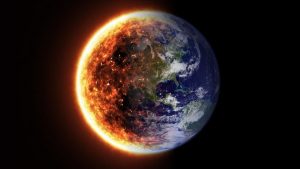La Nina is often referred to as the large-scale cooling of surface temperatures in the central and eastern equatorial Pacific Ocean. This phenomenon occurs every two to seven years. It has widespread impacts on weather around the world — typically the opposite impacts to the El Nino weather phenomenon, which has a warming influence on global temperatures.
La Nina and El Nino are the “cold” and “warm”, respectively, phases of the El Nino-Southern Oscillation (ENSO).
Also Read | 1 in 3 heat-related deaths in last 30 years due to global warming: Study
The normal sea-surface temperature that El Nino and La Nina produce in the east-central Pacific ocean is measured by the Oceanic Nino Index. La Nina is indicated when sea-surface temperature decreases more than 0.5 degrees Celsius for a successive period of five three-month seasons.
What causes La Nina?
It is caused by a build-up of cooler-than-normal waters in the tropical Pacific – area of the Pacific Ocean between the Tropic of Cancer and the Tropic of Capricorn. The process of upwelling happens when unusually strong, eastward-moving trade winds and ocean currents bring this cold water to the surface. It can cause a major drop in sea-surface temperature. During the 1988-89 event, sea-surface temperatures near Ecuador and Peru dropped nearly 4 degrees Celsius.
Also Read | The global economic response to climate change: What’s the plan?
What are the effects of La Nina?
Both El Nino and La Nina affect the rainfall pattern, atmospheric pressure, and global atmospheric circulation. These changes are the main sources of variability in climate for many areas worldwide.
The strong La Nina phenomenon is often associated with catastrophic floods in northern Australia. During the 2010 La Nina event, Queensland, Australia, witnessed one of the worst floods in its history. More than 10,000 people were evacuated and estimated damage of $2 billion was recorded.
La Nina events are also associated with rainier-than-normal conditions are over southeastern Africa and northern Brazil.
Also Read | 50% cut in emission by 2030: Biden’s big promise at climate summit
La Niña also has a positive impact on the fishing industry of western South America. Due to upwelling, high-value fish species such as sea bass are available in plenty.
Coming to the 2020-2021 La Nina, the UN’s World Meteorological Organization, on June 1, said that cycle has closed. The WMO said neutral conditions are likely to dominate the tropical Pacific in the next few months.
La Nina conditions were in place since August-September 2020, according to atmospheric and oceanic indicators. It peaked in October-November as a moderate strength event.







